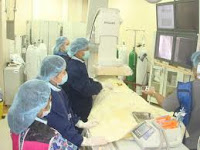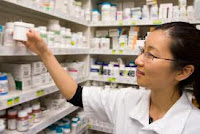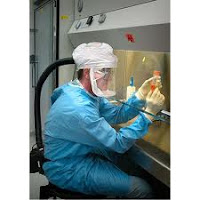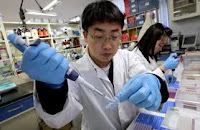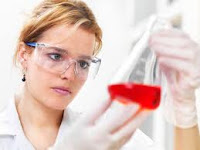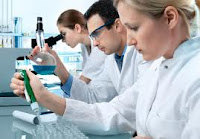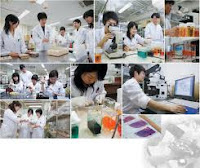How to Treat Menopause Naturally
Menstrual irregularities, hot flashes, sweating, hypertension, circulatory problems, insomnia, sudden mood swings, intolerance to external stimuli ... They are the classic symptoms of menopause. Live with serenity is not impossible. Here's how to minimize the "side effects" of this physiological event, with the right mental attitude and with the help of nature.
Menopause is the permanent cessation of menstruation to stop the activity of the ovaries, aged 45 to 52 years or so. It marks the end of the woman's fertile period and can be caused by physiological or pharmacological or surgical intervention. While by no means a disease but a natural physiological event, is experienced by most women as a pathological condition, a "fracture", which inevitably involves substantial physical, psychological and social. The beginning of the third age is a difficult transition for each woman, albeit in a way, subjective perceptions and expectations, is faced with practical and existential problems that can threaten her femininity and affect their quality of life. At this time already a very delicate period of profound transformations, where she enters a new phase of life, manifest a number of diseases and disorders, major changes occur in the body, there is the fear of losing their status Social and suffering, anxiety and impatience for the future for the present situation. The absence of the menstrual cycle as the scanning time can also feed the painful sensation that "their time", in a sense, has ended.

In ancient civilizations the
menopausal woman acquired a special power, related to the "purity" found. Having completed the full course of the transformation of women (puberty, adolescence, pregnancy, menopause) to guarantee women the opportunity to access the highest civil and priestly functions. The cessation of
menstrual fact sanctioned a return to the condition of original purity, the virginal innocence, and gave the real power.
Unfortunately today we live in a society guided by the logic of maximum performance, where productivity is the only measurement of the value of an individual, and the loss of reproductive capacity may be tinged with negative connotations, to become a sign of the exhaustion of its value , the loss of creative power and vital energy. It is instead the beginning of a new phase of life, in which the creative impulse, instead of pouring out cyclically, has the ability to focus entirely to the inner self. Symbolically, we are witnessing a shift of energy from below, from genital and reproductive functions, up, consciousness. If you can live positively and then, in this period, for women, integrate into their personalities a part of himself first linked to the biological world and develop a creativity that allows it to shift attention to other aspects of life. If the woman is not ready for this change to resist a chance to meet a new part of himself.
The
common symptoms of menopause, hot flashes, tachycardia, dizziness speak of a flow of energy, a "fire", which, no longer locked down, tends to open up a gap to enliven the mind, consciousness . The potential biological psychic creativity is transmuted slowly, giving the woman an important opportunity for renewal and enrichment of personality. The fire of hot, freed from the "hormone storms" should instead be seen as evolutionary thrust of his personality. The circulatory disturbances, in this key are the light of the implementation of a resistance to change of role, image, status, and the reflection of "unconditional" the unconscious fear of meeting the new.
Commonly the word menopause refers to a condition of the woman and not to a specific time in the life of the menstrual cycle. In fact, from the medical point of view, menopause identifies a precise time, date of final cessation of menstrual flow. The events that precede and follow this event include a wide variety of physical and mental changes and occupy a period longer or shorter.
Premenopause: The menstrual cycle has already begun to show irregularities, but the woman does not prove any classic symptom of menopause such as hot flashes and vaginal dryness. Generally a woman reaches menopause after
45 years. Perimenopause: identifies a period of about four years exactly straddling the menopause, the date of cessation of menstrual flow. The menstrual cycle is highly irregular and appear intermittent episodes of vasomotor type, hot flushes and sweats.
Menopause: the date of cessation of spontaneous menses. To identify at least one year must pass without menstrual bleeding.
Postmenopausal: identifies all the latest phase of female life, going from two years of menopause at the end of life. In this phase consolidates the changes of the vagina, uterus and changes in the bladder mucosa and muscle. Become more apparent and the urinary loss of tone of the breast tissue. Greater risk of bone fractures for osteoporosis and the risk of diseases of the heart and blood vessels.
Symptoms Disorders related to menopause can be numerous and very subjective. But undoubtedly the most reliable ones are menstrual irregularities, hot flashes and problems related to changes in the genital tract. All three of these events depend dall'abbassamento estrogen. Other symptoms such as depression, mood swings, sadness may not be directly associated with hormonal changes. It is true that low estrogen levels make women more vulnerable to stress and anxiety.
Hot flashes are the most common symptoms of menopause and affecting more than 60% of women. The hot flash is a sudden heat wave that starts from the waist or chest and reaches the neck, face and sometimes the rest of the body. Face and neck can become red and red spots present. In what often follows copious perspiration and subsequent chill a rebalancing signals the body temperature. They are very common in the evening and in hot weather, but can also occur during the day. Are also possible triggers strong emotions, sudden changes in temperature, digestion difficult. Each hot flash lasts from 15 seconds to 30 minutes, the average is still 5 minutes. Sometimes heart palpitations accompanied by hot flashes.
Drug use is not always the best solution to quench hot flashes. If we can limit the discomfort with simple precautions: avoid wearing synthetic clothes (preventing perspiration), use cotton sheets, do not put neck, keep cool drinks at hand, stop smoking (smoking narrows blood vessels and can intensify and prolong the flushing) avoid coffee, alcohol, sweets, spicy foods, abundant meals, exercise (improves circulation). The lowering of estrogen has important implications on the reproductive system of women, since they make the mucosa moist and supple female sexual organs. The vagina, poorly stimulated, becomes thinner, loses elasticity and becomes dry and barren. The decrease in secretory capacity also transforms the vaginal environment that reduces its normal acidity, which makes the vagina more vulnerable to infections, especially fungal ones. Although the uterus is gradually reduced in volume and retracts.
The changes of menopause, sometimes seriously interfere with sexual activity due to reduced capacity for secretion, the vagina tends to lubricate and slightly more slowly, which may make intercourse painful.
One of the most important health problems of women in menopause is a risk of osteoporosis, where bones become thin, brittle and more prone to fracture. There are now numerous scientific evidence that estrogen deficiency associated with this progressive and debilitating disease, which in fact seems more closely related to menopause than a woman's biological age. The risk of osteoporosis is higher in smokers in alcohol abusers, in women undergoing surgical removal of the ovaries, in those who underwent lengthy treatment with corticosteroids and in all situations of nutritional deficiency.
The
menopause brings with it the increased risk to some serious diseases: hypertension, atherosclerosis, angina and stroke, very popular after a certain age. Estrogen protects women of childbearing age from these diseases, but protection disappears rapidly after menopause when the estrogen level drops drastically and the risk of cardiovascular disease increases over the years. After menopause there is a change in the levels of blood fats of women as a direct result of estrogen sag. LDL cholesterol, the bad, increases and decreases HDL, the good one. Elevated LDL and total cholesterol may contribute to the development of stroke and heart attack.
Natural remedies Many women now realize that drugs are not the only answer to the problems of the female menopause. The contribution of natural medicine is focused on strengthening women's body, promoting balance and self-regulation during this phase of life. Alternative treatments during menopause shift the interest from estrogen replacement therapy on natural ways of self-care. Eating habits and nutritional changes accompanied by specific natural therapies such as acupuncture, shiatsu, herbal medicine, homeopathy, Bach flowers and oligotherapy have shown, in different sizes, you can relieve menopause symptoms. (Menstrual irregularities, hot flashes, night sweats, heart palpitations, vaginal dryness and mood changes) and to reduce the risk of osteoporosis and cardiovascular disease.
Hormone replacement therapy The cyclicity of the menstrual flow in women of childbearing age depends on the balance between the hormone estrogen, progesterone, FSH, LH. During menopause, the hormonal balance begins to change: estrogen and progesterone are generally lower than the norm, and FSH and LH are higher menstrual flow is still present but in an irregular manner. This occurs because the ovaries become less responsive to stimulation of the pituitary hormones. Decreases so the ovarian production of estrogen and progesterone, which results in a shortening and irregular cycles. A shortest cycle is often the first sign of perimenopause. The gradual fall in hormone levels leading to the cessation of ovulation and the disappearance of the menstrual cycle (menopause).
Hormone replacement therapy has proved effective in reducing and, sometimes, resolution of many menopausal disorders. Recent studies have turned their attention to certain substances called isoflavones, often also referred to as phytoestrogens (plant estrogens) as their biological activity is similar to that of the female hormone, estrogen. The most important isoflavones for humans are contained mainly in two plants, soy and black cohosh racemosa. The therapeutic effectiveness of Cimicifuga racemosa has been known since antiquity, and owes its name to the fact that once was used to ward off the bugs, they do not like the smell of its flowers, and against snake bites. Very best known are the properties of soy isoflavones, but the plant, to keep intact its rich content of active ingredients must be absolutely "not genetically modified."
Supply Foods and beverages that become part of our diet not only directly affect the health of our bodies, but also our appearance, mood and vital energy that sets us apart. For women in menopause is important, first, require adequate and well-balanced diet, supplemented with specific foods that can improve the function of organs involved and reduce the symptoms connected with this period. Here then is some dietary rules to deal with menopause with confidence and without interference.
•
Organic Food: grains, vegetables and organic fruits, vegetables and fish, they offer the best guarantee of healthy, balanced meals, refining and storage of foods greatly impoverishes the nutritional value. Many women of menopausal age are not subject to hot flashes, painful menstrual irregularities and vaginal dryness are vegetarians or take special plant foods. Among those plants are to be preferred: whole grains (oats, wheat, barley, rice, rye), herbs (sage, parsley, mint, garlic), vegetables (fennel, carrots, potatoes, green beans), fruit (apples, pomegranates, cherries, dates, citrus fruits, berries), legumes (soy, peas, lentils, beans).
•
PHYTOESTROGENS: found in many plant foods that stimulate the body's production and adjust the level of estrogen and progesterone. Soy in all its forms it is very rich, but many other plant foods contain them. Here's where to find the phytoestrogens: garlic, alfalfa, dill, orange, whole oats, carrots, Cimicifuga racemosa, Brussels sprouts, cherries, onion, coconut, cumin, tarragon, bittersweet, beans, fennel, ginkgo biloba, ginseng, wheat buckwheat, raspberry, lentils, lemon, licorice, apple, peppermint, blueberry, blackberry, whole barley, dwarf palm, sweet potato, peas, tomatoes, rhubarb, green, brown rice, rue, sage, skullcap, sunflower seeds, Flax seeds, rye, sesame, soy, tea, red clover, grapes.
•
Low fat: A healthy diet is not entirely devoid of fat, and some in fact are nutritionally essential. The linoleic acid and linolenic acid are essential fatty acids, useful in women approaching menopause because the dryness of the fight tissues, especially the vagina and skin. Also regulate blood pressure and cholesterol levels, protecting against the risk of cardiovascular disease and stroke. Foods that contain these valuable fatty acids are walnuts, hazelnuts, almonds, seeds and their oils, natural soy and its derivatives.
•
BIOFLAVONOIDS: are substances naturally present in foods and have a moderate estrogenic activity. For this are useful in controlling menopause symptoms, especially hot flashes and vaginal dryness. Foods that contain more you have all leafy greens, the skin of grapes, berries, cherries and white pulp of citrus.
•
Vitamin E: Regulatory action has on hormones produced by the pituitary to stimulate the ovaries. Insomnia, vaginal dryness, hot flashes, menopause symptoms are palpitations themselves of a diet with adequate intake of vitamin E. We are rich in fish and crab meat, whole grains, asparagus, cabbage, eggs, almonds, nuts, seeds and oils of organic cold-pressed.
•
LESS PROTEINS: proteins can have positive effects if they are not always derived from animal and consumed in excess. Red meat worsen menstrual pain and symptoms of premenstrual syndrome increases the risk of osteoporosis, being rich in phosphates that interfere with the absorption and excretion of calcium. Excess protein can lead to a reduced absorption of calcium and magnesium and a lack of B vitamins, with important consequences on bone metabolism. Reduce consumption of animal protein, favoring fish, white meats and legumes.
•
LESS SUGAR: The refined white sugar is not only free of their nutrients than other types of sugars contained in foods directly, but affect the absorption of calcium can trigger hot flashes and forces the body to consume many vitamins, especially group B, which are actively involved in its metabolism. All this does not help the woman who, near the menopause, must face the direct risk of osteoporosis and needs a diet rich in essential nutrients. Gradually replace the sugar grains and organic fruit.
•
LITTLE COFFEE: Caffeine is a powerful stimulant of the central nervous system that often over-excited, reacts causing anxiety, tachycardia, palpitations, tremors and headaches. Hot flashes, night sweats and insomnia in many women in the age of menopause are just triggered by caffeine. The coffee is not the only source of caffeine, is also found in tea, chocolate, many soft drinks and many medicines.
•
NO ALCOHOL:
Alcohol is generally not good for your health, and affects, significantly, on the health of women approaching menopause. Insomnia, depression and hot flashes are aggravated by alcohol consumption. Also interferes with the absorption of calcium and vitamin D metabolism, increasing the risk of developing osteoporosis.
•
SHORT SALE: in women approaching menopause, the salt can produce hot flashes and contribute to calcium loss from bones. It can also aggravate disorders of PMS (irritability, headache, mood fluctuations, bloating and breast pain). To reduce your salt intake is not enough to just add salt to food. The labels of many packaged foods appear the words salt or sodium. The salt is not only used to flavor food but also as a preservative at low cost. Then gradually begin to make less of potato chips, crackers, salami and other cured meats, cheeses, processed food "ready" packaged, canned and smoked meats.
Homeopathy Some homeopathic remedies, by virtue of the general and deep that distinguishes them, can become a valuable alternative treatment for menopause symptoms.
•
LACHESIS mutus: is the remedy most commonly used in menopause. The symptoms evoked by the venom of Lachesis Mutus, a snake that lives in the forests of tropical America, are strikingly similar to those that accompany the arrival of menopause: hot flashes, palpitations, menstrual irregularities, headaches with throbbing sensation and weight, mood changes, insomnia with difficulty falling asleep. The hot Lachesis are accompanied by a feeling of icy cold feet, palpitations by a nagging sense of anxiety or chest tightness that forces you to unbutton his shirt. The headache is a headache, or supraorbital back, sometimes they are manifested as headache with pain in the left buttons. Lachesis absolutely does not tolerate the constraints, does not like confined spaces and the physical contact and annoyance for all tight clothing (no tight clothing and necklace sets, belts can not stand. Anxious and sad in the morning happy and full of life in the evening , jealous and fearful woman Lachesis alternates moments of silence and periods of voracious loquacious.
•
GRAPHITES: is useful for treating symptoms of perimenopause, especially in women who are grossly overweight, pale and chilly, with problems of constipation and flatulence. Their skin is usually dry with spots and blisters that ooze fluid. Women are often indecisive, apathetic, sad, melancholy, sometimes frankly depressed. Extremely sensitive are moved easily, cry listening to music or seeing an exciting show. Graphites women experience a sensation of itching before or during menstruation, which is delayed, limited in quantity and rather short.
•
SEPIA: obtained by the ink of the cuttlefish is a useful remedy to relieve the ailments that accompany menopause, especially in lean women, the hair and dark eyes, and frequent problems with their liver and urinary disorders of the genitourinary system. The changes in the genitourinary apparatus, which can get to a descent of the uterus and bladder (prolapse), are a sign of the fall "down" mood, and the élan vital. Sepia in effect, she has a feeling of heaviness in the pelvis and the impression that everything falls down. So his mood is linked to characters of sadness, pessimism and irritability that give Sepia a vision of black life. In addition, the vaginal dryness that follows menopause greatly aggravates the state of frigidity and difficulties of living peacefully sex that often accompanies the woman Sepia. This leads to increase the natural tendency to isolation of these people.
•
THUY: it is one of the great basic homeopathic remedies. Equipped with wide and deep action, is particularly suitable for menopause symptoms affecting mainly the genital apparatus. The menstrual cycles are irregular, with early and prolonged menstruation, or scarce and intermittent. The woman who has more than it benefits from Thuya characteristics: it is chilly, with a tendency to obesity, where fat is concentrated mainly in the trunk and hips, and legs are thin and are sometimes perceived as fragile and delicate. The facial skin is oily and greasy and are often evident in the body and small benign skin growths. She has often been Thuya medical treatment with antibiotics, steroids, or worse has seen some of his problems after vaccinations. Thuya has obsessive ideas such as the fear of death or illness, the impression of not being able to sustain its body and the feeling of having something alive in the belly.
•
IGNATIA: remedy to consider if prevailing psychic symptoms characterized by instability, sudden mood changes (transition from laughter to tears from depression to joy) or paradoxical behavior (hysterical laughter upon hearing bad news, you feel better in the noise) . Another feature is the appearance of symptoms after a disappointment.
Oligotherapy Minerals, seemingly minor items, are an important source of natural medicine in the treatment of menopause symptoms.
MANGANESE -
COBALT: basic products for the treatment of common ailments of menopause and can be effectively combined with other natural therapies. Manganese regulates sleep patterns, reduces mood swings and alleviates any excessive and painful uterine contractions irregular cycle of premenopausal. Cobalt acts on the vasomotor disturbances, improving the episodes of tachycardia and palpitations, especially mitigating hot flashes.
COPPER -
GOLD -
SILVER: to be used in all those cases in which the menopause is associated with fatigue, lack of vitality and inability to adapt to a new state of the organism. Do not forget that these disorders often lead to depression and isolation. In addition, anti-infective properties and the ability to reinforce its Copper-Gold-Silver help to prevent episodes of genitourinary infections, common in many women in the age of menopause.
ZINC -
COPPER: complex control of the pituitary-adrenal-genital heart, in particular zinc is a regulator of the pituitary. It is used in the treatment of hormonal disorders, smooths the flushing symptoms during the acute phase. If you experience anxiety even better to add magnesium.
Phytotherapy Disorders involving the menopause, vasomotor, nervous, hormonal and genital load, can be addressed with herbs. Indeed, in some cases it can also act as a preventive measure. The greatest effect is on the autonomic nervous system, which favors the balance.
SAGE: known for centuries for its ability to regulate the menstrual flow, has now found a solid scientific confirmation in the complementary treatment of menopause symptoms. Sage is in fact very rich in phytosterols, the so-called "natural estrogens". These, although much lower than hormonal activity of estrogen produced by the ovary, if taken in good time and perseverance before gently relieve the discomforts of menopause, estrogen deficiency.
Black Horehound: Contains pro-hormones that reduce hot flashes and shows sedative properties. It is traditionally stated, thanks to the sedative and anxiolytic, in anxiety manifestations that accompany menopause.
HEART: dissolves irritability by relaxing the nervous system, tones the heart, soothes and regulates the pressure, real panacea against spasms and palpitations, bridle stress. It is used as a sedative in cardiac autonomic disorders: sudden rises and drops in pressure, hot flushes.
CRANBERRY RED: acts by attenuating the symptoms of reduced ovarian production of estrogen and progesterone that occur during menopause or when there has been an abuse of synthetic hormone therapies.
RASPBERRY: used in women's hormonal disorders and disorders of menopause, has antispasmodic properties and endocrine rebalancing in the uterus.
MELISSA: exerts a relaxing action on the nervous system and at the same tonic and empowering: soothes nervous tension and anxiety, relieves stress related disorders such as somatization and acts on the digestive spasms, palpitations, headache, dizziness, upward trend in blood pressure. It gives peace of mind, takes away the anxiety, calms the restlessness, overcomes sadness and boredom, psychological symptoms are often common in menopause.
Passiflora: its therapeutic action occurs mainly in relation to hot flashes, more action also has anxiolytic, reducing anxiety, promotes sleep nightly.
GINGKO: it is a good medicine for the elderly. Useful in cerebral circulatory insufficiency, arterial disease in lower limbs, vertigo, memory and decreases in depression, recurring problems at this stage of life.
OLIVE: solar plant, a symbol of peace, is a remedy for high blood pressure, lowers blood pressure by peripheral vasodilatation with no effect cardiodepressore. Particularly suitable for those with the least and those who suffer from high blood pressure source anxious.
HAWTHORN: cardiotonic, ipotensore, sedating the nervous system, is the calming of the heart par excellence. Lowers blood pressure because it improves circulation, reduces the emotional, the hypertension and improves sleep. Effective in neurovegetative dystonia disorders (anxiety, anxiety, dizziness, irritability, insomnia, palpitations, tachycardia, angina, and vascular spasms). Used to prevent menopausal hot flashes, tachycardia, angina, in associane with hormone phytoestrogen which offset the decline.
EQISETO: its activity is twofold, both as a diuretic and as a re-mineralizing the high silica content, bone mineral which enters into the constitution: the second law of "biological transmutation" of the silicon plant is transformed into calcium. Is used to prevent postmenopausal osteoporosis.
Aromatherapy The essential oils of sage and lemon balm are the best herbs to deal with menopause symptoms. The lemon balm essential oil induces sleep and regulates mood calming the nervous excitability. The essential oil of sage helps balance psychologically to respond to hormonal changes of menopause: is able to act with an overall balancing effect, relaxing, reviving and stabilizing the energies of the mind. Place 5 drops of 5 Sage and Melissa in a special speaker for the essences in the bedroom before going to sleep.
Flower Therapy Flower therapy proves to be useful in alleviating some of the situations of distress related to menopause mental sphere. It should however be considered a complementary treatment to other possibilities of natural medicine such as homeopathy, herbal medicine, acupuncture and acupressure.
Mustard: relieves depression that seems to depend on for no apparent reason.
SCLERANTUS: assists when the mood is black; beneficial in the sudden and unexplained mood swings.
OLIVE: useful for restoring energy in the event of weakness and fatigue.
Mimulus: against the fear of growing old.
STAR OF BETHLEHEM: it is a comfort to those who feel the "weight of years"; useful at all times of sadness and melancholy experienced in relation to the loss of youth.
Physical activity Practicing physical activity is consistently one of the best things you can do better than women to experience changes, physically and mentally, that accompany menopause. Physical activity exerts intense stresses that increase bone density and strength, the bones of the female organism in the first 4-5 years after menopause lose 5% of their density. It helps regulate levels of cholesterol and blood sugar, protecting by atherosclerosis and diabetes. Also you can hold off the blood pressure and reduce the risk of other cardiovascular diseases, risk increases after menopause. The slow and prolonged aerobic activities are more appropriate (bicycle, walking incurred, jogging), and yoga, qi gong, tai ji quan, bioenergetics, Pilates, disciplines are the most effective.
How to Treat Menopause Naturally
How to Treat Menopause Naturally

